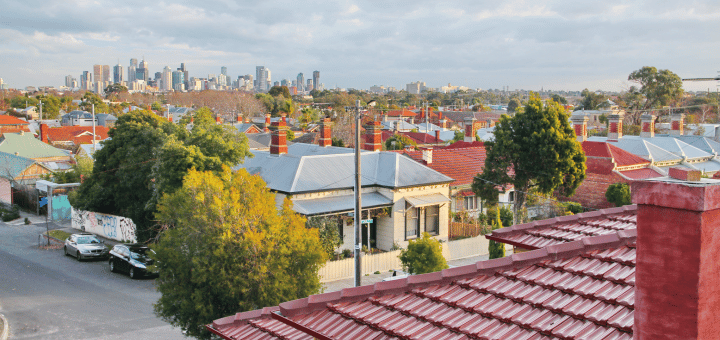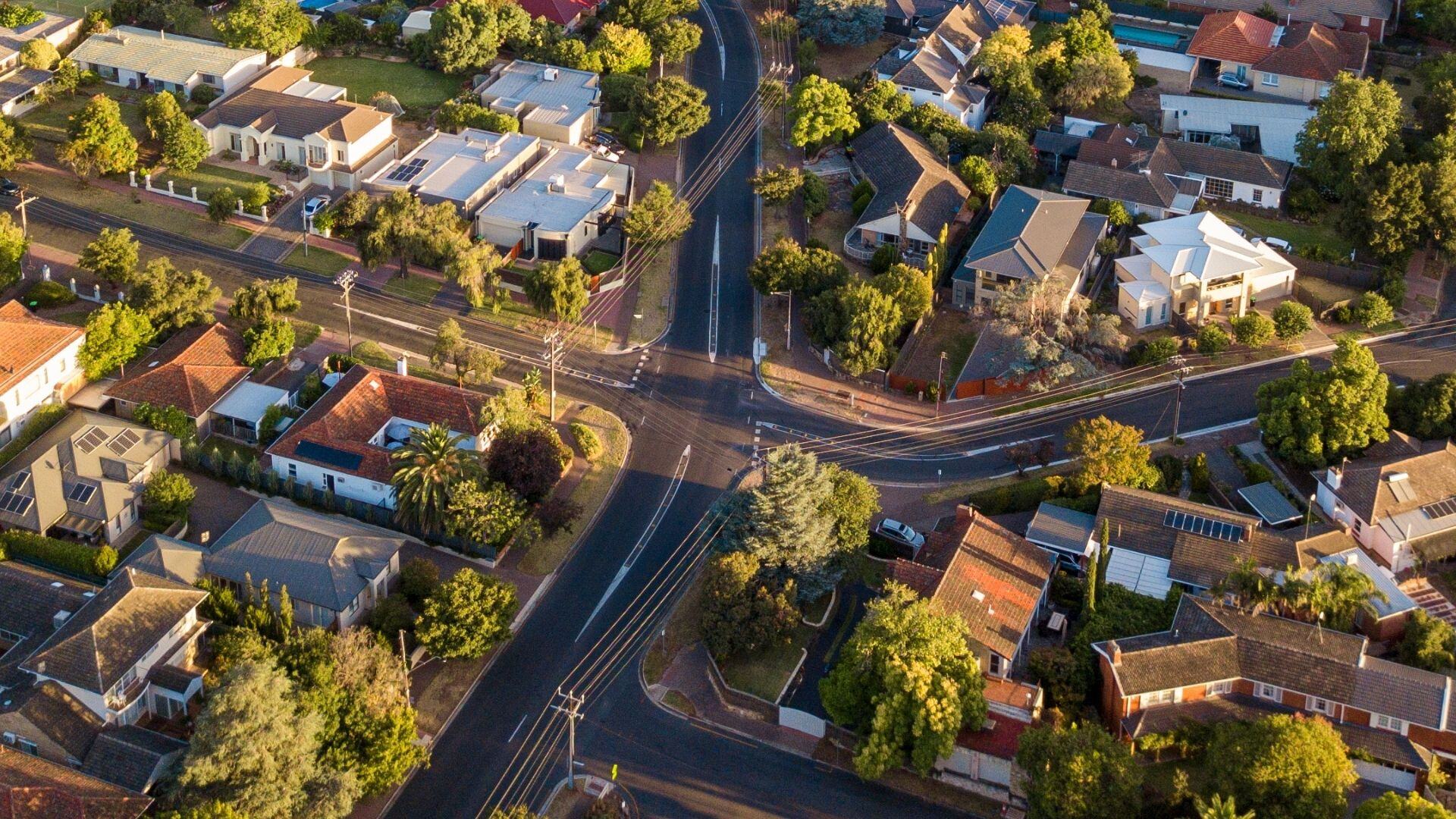BLOG
Vacant dwellings in rural areas
Vacant dwellings in rural areas
It might surprise some people that about one in ten dwellings in Australia are vacant on Census night. What’s more, as we’ve blogged previously, there are distinct spatial patterns to vacant dwellings, with the highest proportions generally recorded in coastal areas with high amenity. The reasons for this are well documented and are generally due to holiday or second home ownership. However, there are inland parts of Australia where the proportion of vacant dwellings is quite high, and in some parts, increasing over time. Some of these are in locations that are not considered high amenity, so what are the characteristics of these areas? Let’s take a closer look.
What region has the highest proportion of vacant dwellings?
Rural areas, regardless of whether they are on the coast or inland, tend to have higher vacancy rates than metropolitan areas and large regional centres. Similar to coastal regions, many are located in areas of high amenity and hence are attractive locations for holiday or second homes. The table below shows the inland areas with the highest proportion of vacant dwellings across Australia. Note that inland areas are defined as those which do not share a boundary with the coast, and that the table excludes SA2s with less than 200 dwellings.
At the SA2 level, Central Highlands in Tasmania has the highest proportion of vacant dwellings in Australia – 64.2% in 2011. This roughly equates to the Central Highlands Council covering central Tasmania – a sparsely settled area with small towns. Apparently there are a number of fishing shacks around the lakes, which at Census time during the week in the middle of winter are unlikely to be occupied.
| SA2 | State | Proportion (%) |
|---|---|---|
| Central Highlands | TAS | 64.2 |
| Mansfield | VIC | 45.0 |
| Mannum | SA | 41.3 |
| Western | SA | 37.7 |
| Cooma Region | NSW | 33.4 |
| Mukinbudin | WA | 33.1 |
| Bright – Mount Beauty | VIC | 31.9 |
| Alexandra | VIC | 31.4 |
| APY Lands | SA | 30.8 |
| Tanami | NT | 30.2 |
Source: ABS, Census of Population and Housing (2011) – unpublished data
Interestingly, there are SA2s in this list that are located in snowfield regions – an area were you expect any vacant dwellings to be occupied on Census night. In Mansfield, almost half of dwellings were unoccupied – surprising given that Mount Buller and its ski fields are located in this area. Other ski field locations with a high proportion of vacant dwellings on Census night include Cooma Region in NSW (33.4%) and Bright – Mount Beauty (31.9%). While the ski fields have their peak season in August, it may be affected by the quality of the snow season – 2011 was not a good season for the ski fields and this would have had an impact on vacancy rates. In addition, because of the high amenity of these areas there are a growing number of holiday/second homes.
There are also some very remote areas with high Indigenous populations in this list, namely APY Lands in the north west corner of South Australia and Tanami in the western part of the Northern Territory. The higher proportion of vacant dwellings may relate to the high rate of personal mobility amongst the Indigenous population but there may also be a number of abandoned houses due to the remoteness factor.
Vacant dwellings and population change – Campaspe Shire as a case study
Since the 1980s there has been a decline in the proportion of vacant dwellings in coastal areas, but this has tapered off since 2006 and in some areas, it has increased slightly. In contrast, the proportion of vacant dwellings in inland areas may be increasing. Using Campaspe Shire as an example, an analysis of Census data in profile.id allows us to see trends over time on consistent geographic boundaries. I’ve long been suspicious that part of the story behind population decline in rural areas is a higher incidence of abandoned dwellings, hence contributing to the vacancy rates.
Campaspe Shire is located in northern Victoria and is centred around the regional town of Echuca. The Shire has experienced periods of rapid growth, most notably in the late 1990s and early 2000s. Much of this growth was centred around Echuca which was favoured as a lifestyle and retirement destination. However at the same time the rural parts of the Shire were recording population decline, in line with long standing trends in dryland farming areas of Victoria. In 2011, about one in eight dwellings in Campaspe were vacant on Census night, but it varied widely. The table below shows the vacancy rates by small area in Campaspe over the period 1991-2011.
| Small area | 1991 | 1996 | 2001 | 2006 | 2011 |
|---|---|---|---|---|---|
| Proportion (%) | |||||
| Echuca | 8.3 | 8.4 | 7.5 | 8.7 | 9.3 |
| Kyabram | 9.0 | 8.0 | 8.9 | 8.8 | 8.3 |
| Lockington-Gunbower & District | 8.7 | 11.5 | 11.3 | 15.5 | 19.1 |
| Rochester | 9.4 | 8.9 | 9.5 | 11.6 | 13.0 |
| Rushworth & District | 16.8 | 22.5 | 18.5 | 18.1 | 22.9 |
| Stanhope & District | 7.6 | 11.3 | 9.8 | 11.2 | 13.6 |
| Tongala & District | 9.0 | 10.5 | 8.0 | 8.6 | 10.8 |
Source: Census of Population and Housing (1991-2011), compiled and presented in profile.id
In general, the vacancy rate in the two larger towns – Echuca and Kyabram – remained fairly stable over time, and they were also around the national average of 10%. It was a different story in the rural parts of the Shire, particularly those with no large towns. In Rushworth & District, close to 23% of dwellings were vacant on Census night in 2011, up from 16.8% in 1991 (but with a volatile trend over the twenty years). However in Lockington – Gunbower & District, the vacancy rate effectively doubled over the twenty years, from 8.7% in 1991 to 19.1% in 2011. Moreover, the actual number of vacant dwellings almost tripled in this time, from 125 to 336, and since 2001 the number of occupied dwellings has declined. So although the total dwelling stock has increased slightly since 1991, it hides a decline in the proportion of dwellings that are occupied.
At the same time, the population of Lockington-Gunbower & District has shown steady decline, and the proportion of elderly people has increased. These processes, along with out migration of young people, have resulted in smaller households (fewer family households and more lone persons), and a corresponding decline in average household size. These sorts of demographic processes are well documented as a characteristic of rural change in Victoria, particularly in dryland agricultural regions. But is the increasing proportion of vacant dwellings also playing a role? At the most basic level, if we put people in the 2011 vacant dwellings at the rate recorded in 1991 (8.7%), there would be a potential 480 more people in the population, wiping out the population decline that did occur. Although it’s a very simplistic way of looking at the issue as it doesn’t account for demographic factors such as births, deaths and migration, it does highlight a potential role that vacant dwellings are playing in housing and demographic change in rural Victoria.
Why has the proportion of vacant dwellings increased in an area that is not considered a retirement or high amenity region? Unfortunately we don’t know why because we can’t ask the vacant householder. In the absence of any qualitative research we can only speculate – farm amalgamations, abandonment, long turnover times may all be playing a role. What ever the reason, it is not difficult to conclude that they are likely to be different to coastal and amenity areas, simply because the demand for holiday and second homes are not present in a rural agricultural region.
Do you live in an inland area? Have you noticed changes in the occupancy rates over time? Give us your thoughts on the potential reasons in the comments section.
Simone - Myth Buster
Simone has a rich background in human geography, demography and urban planning – a background that was useful in her previous roles in the Commonwealth and State Governments, and now as part of the forecast team at .id. From the Queensland coast to the southern suburbs of Perth, Simone produces population and dwelling forecasts that help local governments make informed decisions about future service and planning needs. She is a regular contributor to .id’s blog and has spoken at several conferences on how our cities and regions are changing. She is a big advocate of evidence-based planning and how Census and other data can inform this. Outside of work Simone is a keen traveller and photographer – interests that tie in well with her professional life and help her to understand “place”.











